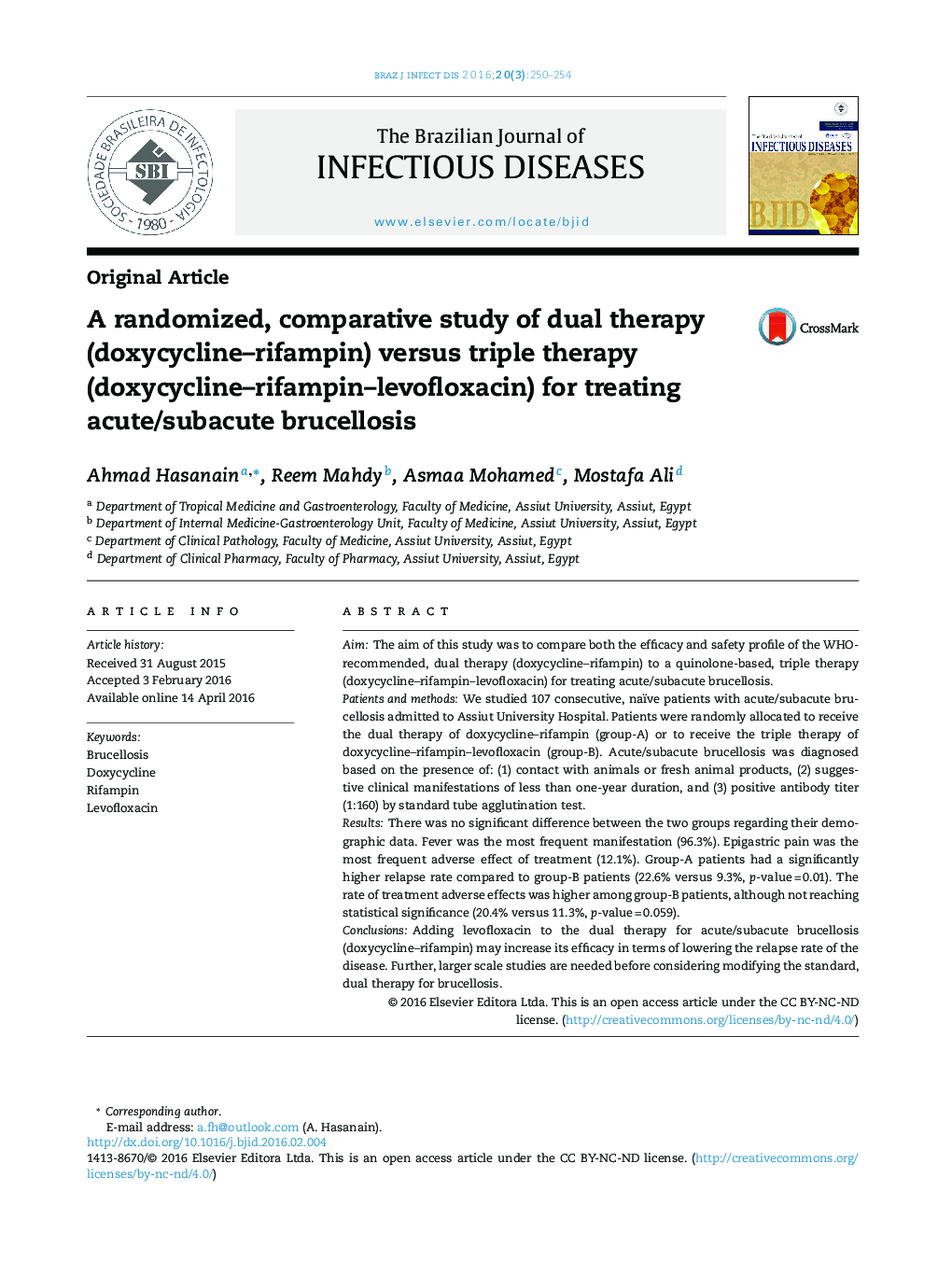| Article ID | Journal | Published Year | Pages | File Type |
|---|---|---|---|---|
| 3343690 | The Brazilian Journal of Infectious Diseases | 2016 | 5 Pages |
AimThe aim of this study was to compare both the efficacy and safety profile of the WHO-recommended, dual therapy (doxycycline–rifampin) to a quinolone-based, triple therapy (doxycycline–rifampin–levofloxacin) for treating acute/subacute brucellosis.Patients and methodsWe studied 107 consecutive, naïve patients with acute/subacute brucellosis admitted to Assiut University Hospital. Patients were randomly allocated to receive the dual therapy of doxycycline–rifampin (group-A) or to receive the triple therapy of doxycycline–rifampin–levofloxacin (group-B). Acute/subacute brucellosis was diagnosed based on the presence of: (1) contact with animals or fresh animal products, (2) suggestive clinical manifestations of less than one-year duration, and (3) positive antibody titer (1:160) by standard tube agglutination test.ResultsThere was no significant difference between the two groups regarding their demographic data. Fever was the most frequent manifestation (96.3%). Epigastric pain was the most frequent adverse effect of treatment (12.1%). Group-A patients had a significantly higher relapse rate compared to group-B patients (22.6% versus 9.3%, p-value = 0.01). The rate of treatment adverse effects was higher among group-B patients, although not reaching statistical significance (20.4% versus 11.3%, p-value = 0.059).ConclusionsAdding levofloxacin to the dual therapy for acute/subacute brucellosis (doxycycline–rifampin) may increase its efficacy in terms of lowering the relapse rate of the disease. Further, larger scale studies are needed before considering modifying the standard, dual therapy for brucellosis.
